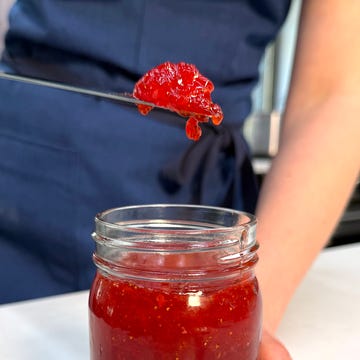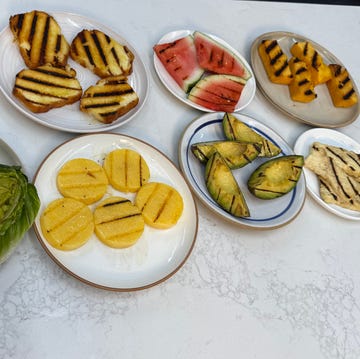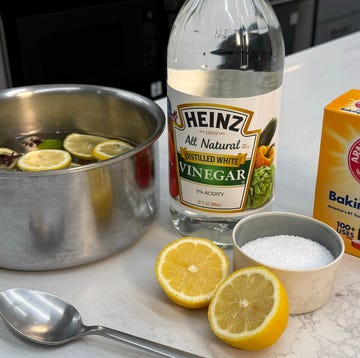We can safely say that winter is over. As temperatures start heating up, we can finally take advantage of outdoor dining. And few things channel warm weather vibes as well as a tray of freshly shucked oysters.
Whether you like East or West Coast, mignonette or lemon, Tabasco or no Tabasco, an oyster is a one-bite wonder that’s best enjoyed on a patio (preferably with an Aperol spritz in hand). But you may be less excited about summer oysters when you hear about the “R” rule.
The “R” rule is a longstanding rule of thumb that you should only eat oysters during months that have the letter “R” in them. Eating oysters outside of that time frame was traditionally believed to be linked to lower quality and a higher risk of foodborne illness. That range is between September and April, which suggests that your summer oyster dreams (during the months missing that important letter: May, June, July, and August) may be dashed.
But how real is this rule, anyway? We consulted seafood and food safety experts to unpack the truth about eating raw oysters and what you should do to avoid getting sick.
Why Was The “R” Rule Invented?
First, it’s worth noting that oysters have been consumed for tens of thousands of years by civilizations across the world. But before there were oyster farms, humans sourced their mollusks in the wild.
The “R” rule was first coined in reference to wild-caught oysters—partially for food safety, but also for quality. “In warmer, ‘R’-less months, oysters spawn, which changes their texture,” says Dr. Bryan Quoc Le, food scientist and author of 150 Food Science Questions Answered.
That texture will vary depending on the oyster. Some oysters incubate thousands of tiny shells that feel like sand in your mouth. Others will develop an unpleasantly soft texture. And the flavor of oysters in this time period can range from watery to milky to bitter.
But beyond that, there have been inherent safety risks with harvesting, processing, and eating wild oysters in “R” free months. “Oysters are filter feeders and absorb any toxins in their growing environment,” says Roberta Muir, cookbook author, gourmet tour leader, and former instructor at Sydney Fish Market’s seafood cooking school. And many toxins have higher concentrations in warmer parts of the year.
Harmful algae proliferate in warmer waters, as do pathogenic bacteria like Vibrio. “Before modern refrigeration, keeping oysters fresh in hot weather was also a challenge, further reinforcing the need for seasonal caution,” adds Melissa Vaccaro, senior food safety program specialist at The National Environmental Health Association.
Before the development of modern technology and aquaculture, there was no way to test or treat waters that might have contained large concentrations of toxins. Thus the "R” rule was created to limit oyster consumption during high risk periods and mitigate illness.
Do We Still Need To Follow The “R” Rule?
You can thank industry safety protocols and the rise of oyster farming for making the “R” rule nearly obsolete.
“Many oysters are farmed in controlled environments, reducing bacterial risks, and some are bred as triploids, meaning they don’t spawn and remain plump year-round,” Vaccaro says. These controlled environments and stringent safety measures significantly reduce the risk of illness.
“As long as oysters are handled properly by being shaded and iced down at time of harvest, and come from bodies of water that are regularly monitored, they should be safe to consume,” says Nicole Powell, oyster farmer and co-owner of Neguntatogue Oysters.
Wild oysters are still harvested and sold, carrying some degree of risk in warmer months. The modern oyster industry imposes strict rules on processing to avoid passing harmful germs to consumers. However, climate change is making it much easier for oysters to become contaminated.
“Rising global temperatures are clearly linked to increasing waterborne food poisoning, particularly from eating raw oysters,” says Dr. Benjamin Miller, EVP of Regulatory and Scientific Affairs at The Acheson Group. This is particularly true when it comes to Vibrio vulnificus bacteria. The CDC says that Vibrio infections have increased eightfold over the past fifty years—and nearly 20% of cases are fatal.
And with the rising water temperatures worldwide, the risk of illness is not going away. “Vibrio infections have been steadily shifting northward, appearing in regions where they were previously rare,” Miller says. “The Chesapeake Bay has seen Vibrio infections nearly double from 2007 to 2019, with nearby Pennsylvania experiencing a 490% surge in cases.”
Miller also warns that the safety of oysters is under threat with FDA budget cuts, which could impact regulatory programs like the National Shellfish Sanitation Program. But that does not mean you need to forgo oysters entirely.
Food safety experts say that you can minimize health risks by sourcing oysters from reputable suppliers who follow strict safety protocols. “It is always a good idea to ask where your oysters are from when ordering, including the region and body of water,” Powell says. Le adds that “reputable restaurants usually have that information on hand and serve oysters well-chilled on clean ice.”
An added safety precaution is forgoing wild oysters in the summer. “Many farmed oysters are grown in controlled environments with strict safety measures, often making them a safer choice than wild-caught oysters in warmer months,” Vaccaro says.
None of these measures will fully eliminate your risk of foodborne illness from oysters, but they are still more reliable than the “R” rule.















